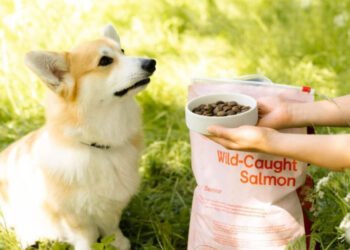In the pet food aisle, you are looking at rows and rows of choices for your furry friend. Because it is better for their health, you have decided to switch to fresh dog food. But there are so many options out there, how do you know you are making the right choice? In this article, you will explore seven common mistakes to avoid before buying fresh dog food.
1. Not Researching Dog’s Dietary Needs
Different dogs have different nutritional requirements based on factors like breed, age, size, and activity level. Understanding your dog’s specific dietary needs ensures that you choose a fresh food formula that provides balanced nutrition to support their overall health and well-being.
Consider factors like protein content, fat levels, carbohydrate sources, and essential vitamins and minerals when selecting the right fresh food for your furry friend.
2. Overlooking Ingredient Quality
The quality of ingredients used in the food directly impacts its nutritional value and digestibility for your dog. Look for fresh dog food made with high-quality, natural ingredients that are free from artificial additives, preservatives, fillers, and by-products.
Choose recipes that feature real meat, whole grains, fruits, and vegetables as the primary ingredients to provide your dog with essential nutrients and support their digestive health.
3. Ignoring Food Allergies or Sensitivities
It’s essential to consider your dog’s food allergies or sensitivities when choosing fresh dog food. Some dogs may have allergies or intolerances to certain ingredients like grains, poultry, or dairy, which can cause digestive upset or skin problems.
Before introducing a new fresh food formula, consult with your veterinarian to identify any potential food allergies or sensitivities your dog may have. Select fresh dog food recipes that are free from common allergens or contain alternative protein and carbohydrate sources to accommodate your dog’s dietary restrictions.
4. Failing to Transition Properly
Abruptly switching your dog’s food can lead to gastrointestinal upset, including diarrhea, vomiting, or decreased appetite. To prevent digestive issues, gradually introduce the new fresh food by mixing it with your dog’s current diet over 7-10 days. Start with a small amount of fresh food and gradually increase the proportion while decreasing the old food until your dog is eating only the new diet.
5. Disregarding Storage and Handling Guidelines
Fresh food is perishable and requires proper storage and handling to maintain its freshness and safety. Follow the manufacturer’s instructions for storing the food, including refrigeration or freezing requirements, expiration dates, and serving sizes. Store fresh dog food in a clean, airtight container to prevent contamination and spoilage.
Additionally, wash your hands and food bowls before and after handling fresh food to minimize the risk of bacterial contamination and foodborne illness for both you and your dog.
6. Not Reading Reviews and Testimonials
Reviews from other pet owners can provide valuable insights into the quality and effectiveness of the food. For instance, reviews can tell you if the food is well-liked by dogs if it has caused any health issues, or if it has improved a dog’s health and coat.
Testimonials often share real-life experiences, highlighting both the positives and negatives. By skipping this step, you might miss out on important information that could help you make a better choice for your dog’s health and happiness.
7. Choosing Based on Price Alone
While it’s natural to consider your budget, the cheapest option might not be the best for your dog’s health. Low-priced fresh dog food might lack essential nutrients or be made from lower-quality ingredients. This could lead to health problems for your pet in the long run.
But sometimes the most expensive choice is not the best either. It’s important to look at the ingredients, nutritional content, and reputation of the brand. Ensure the food meets your dog’s specific dietary needs and preferences. Balance cost with quality to find the best option that fits both your budget and your dog’s nutritional requirements.
Ensure Optimal Nutrition, Buy Fresh Dog Food Now
Your dog’s health and well-being are paramount, and providing them with optimal nutrition is essential for a happy and vibrant life. By avoiding common mistakes and choosing fresh dog food carefully, you can ensure that your furry friend receives the nourishment they need to thrive.












